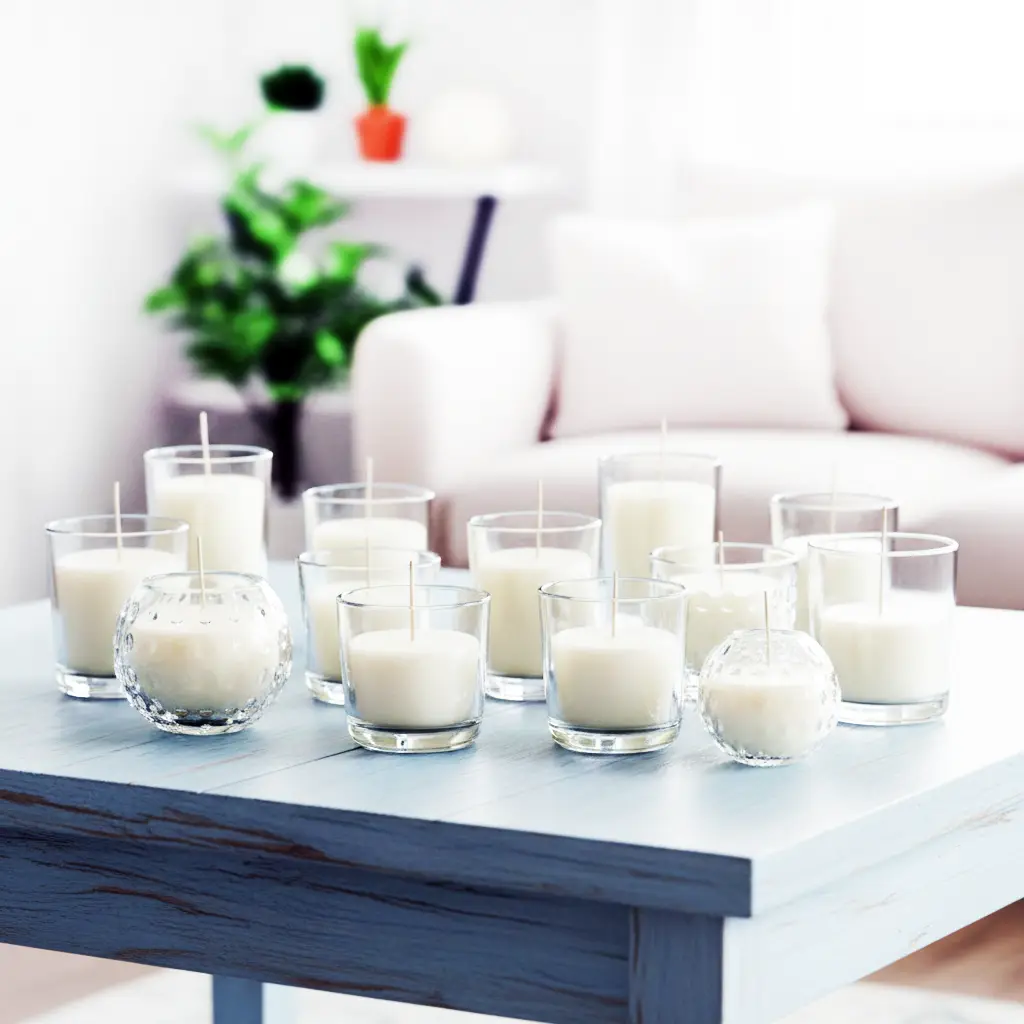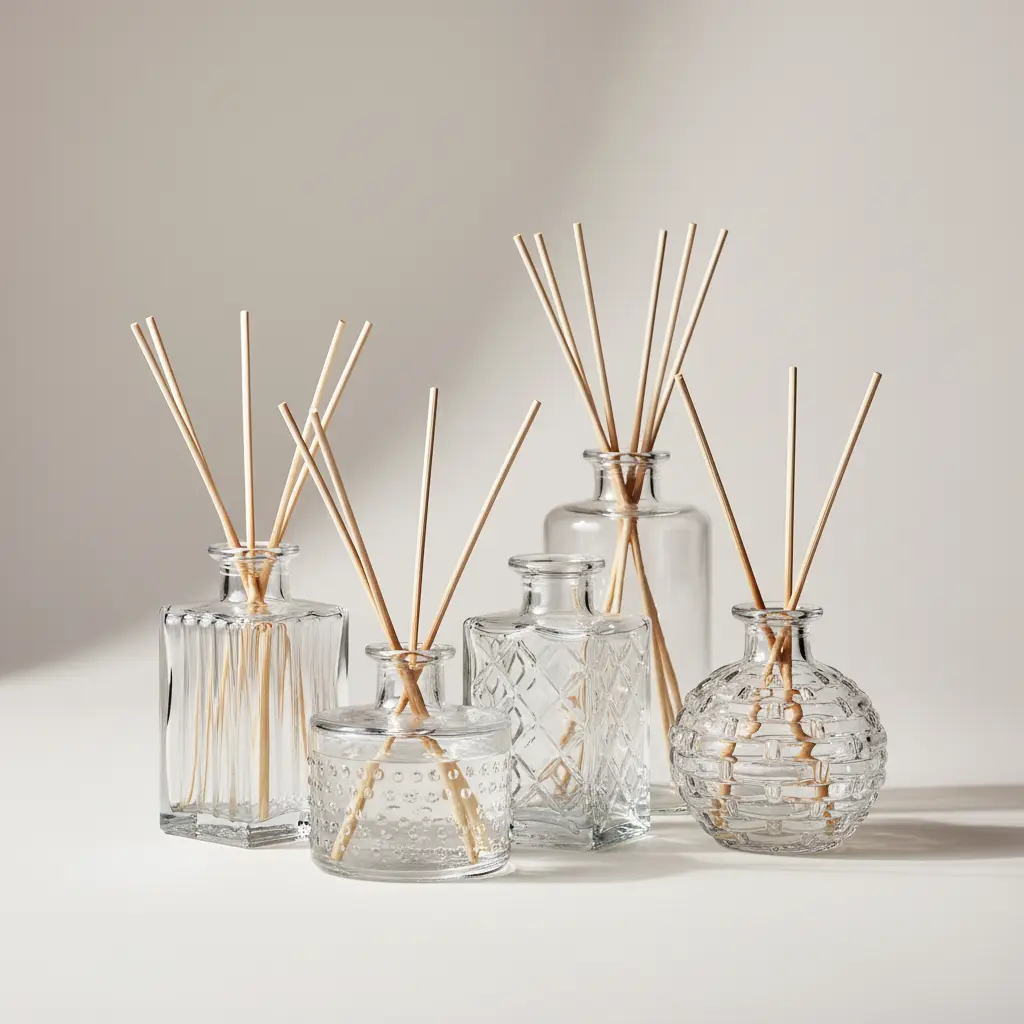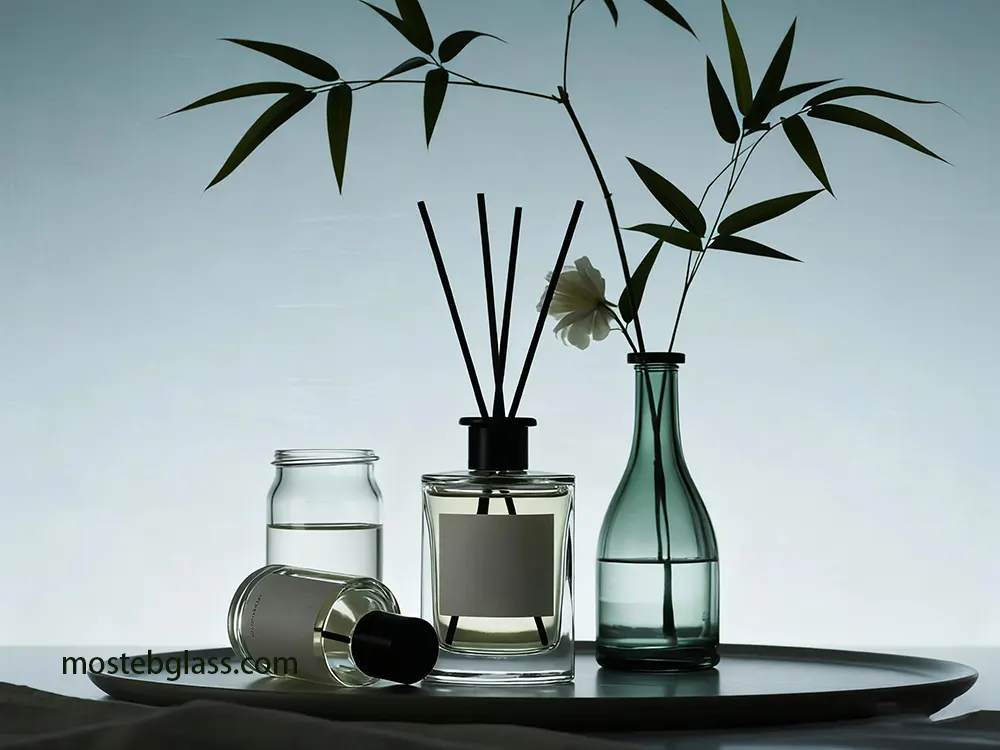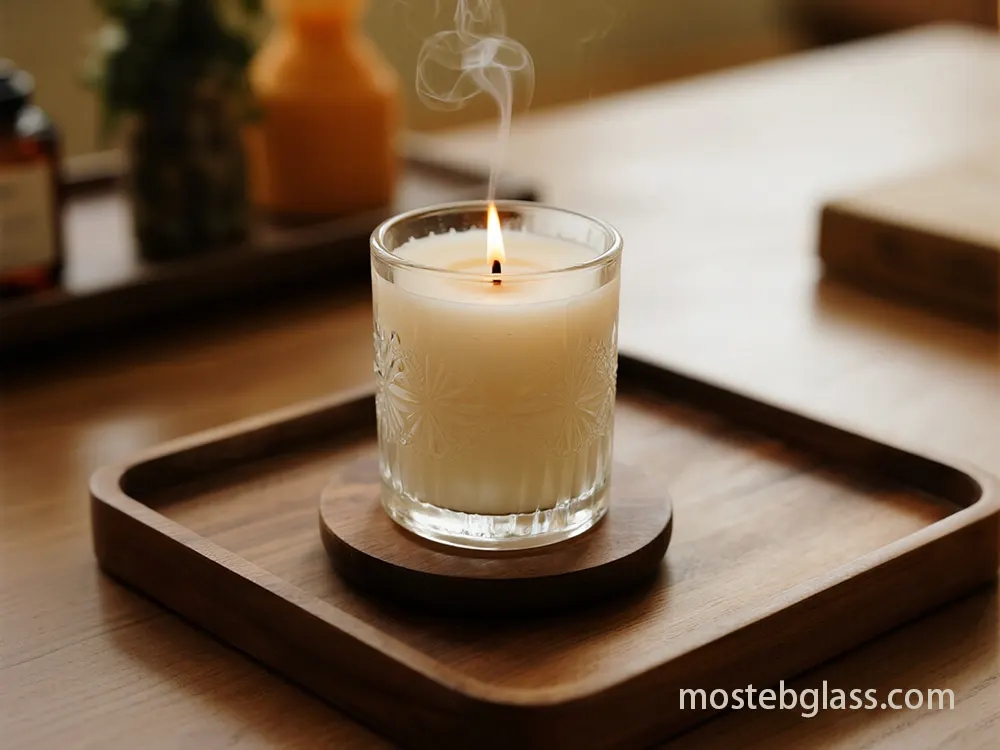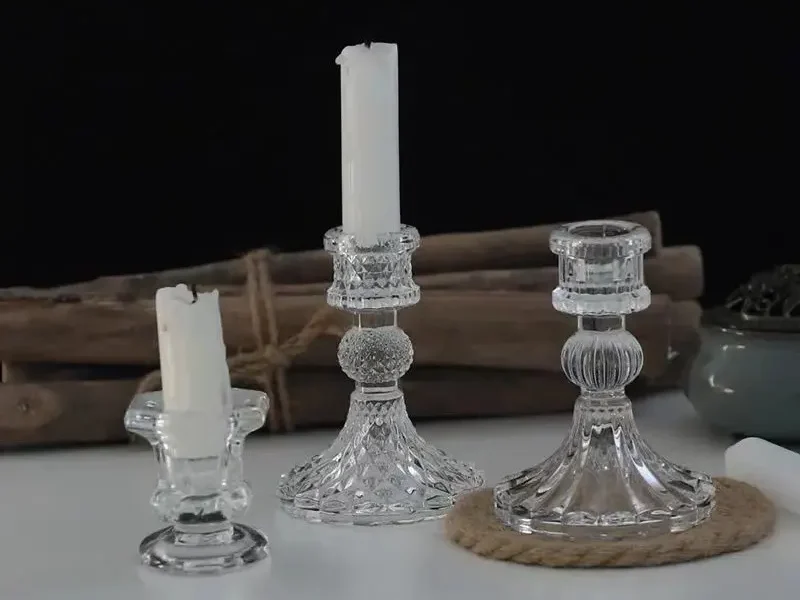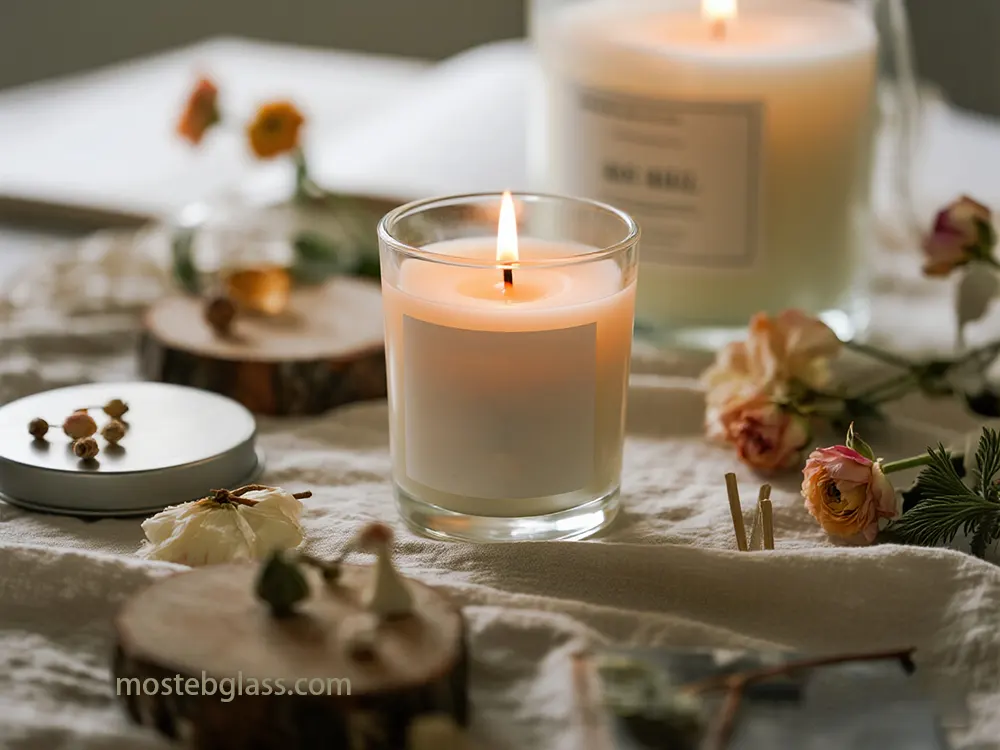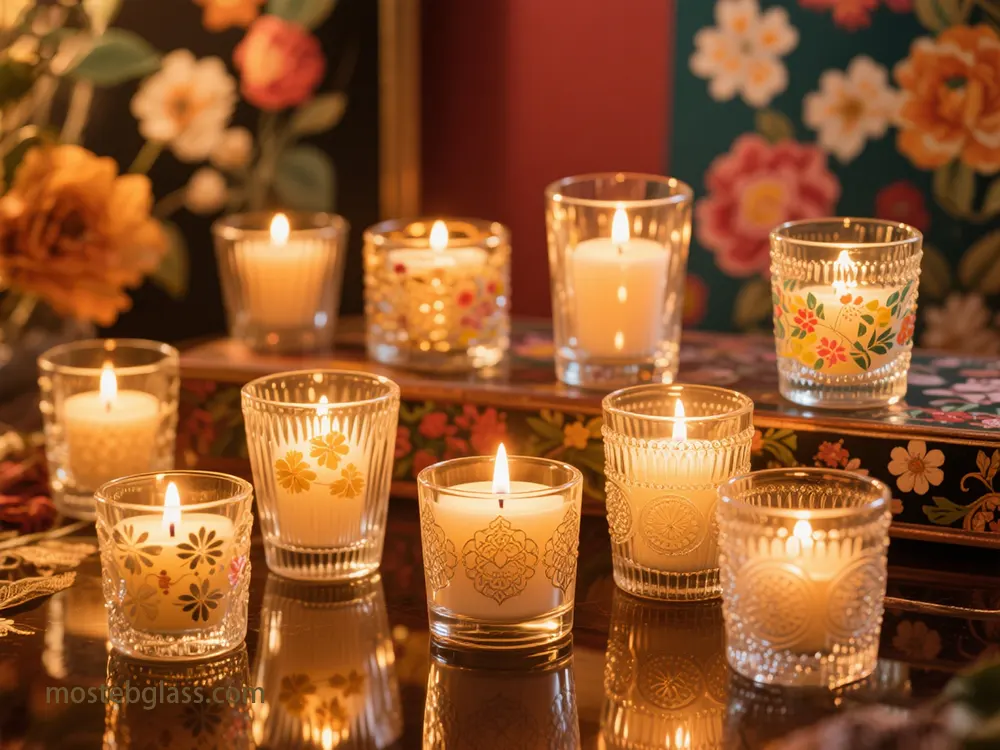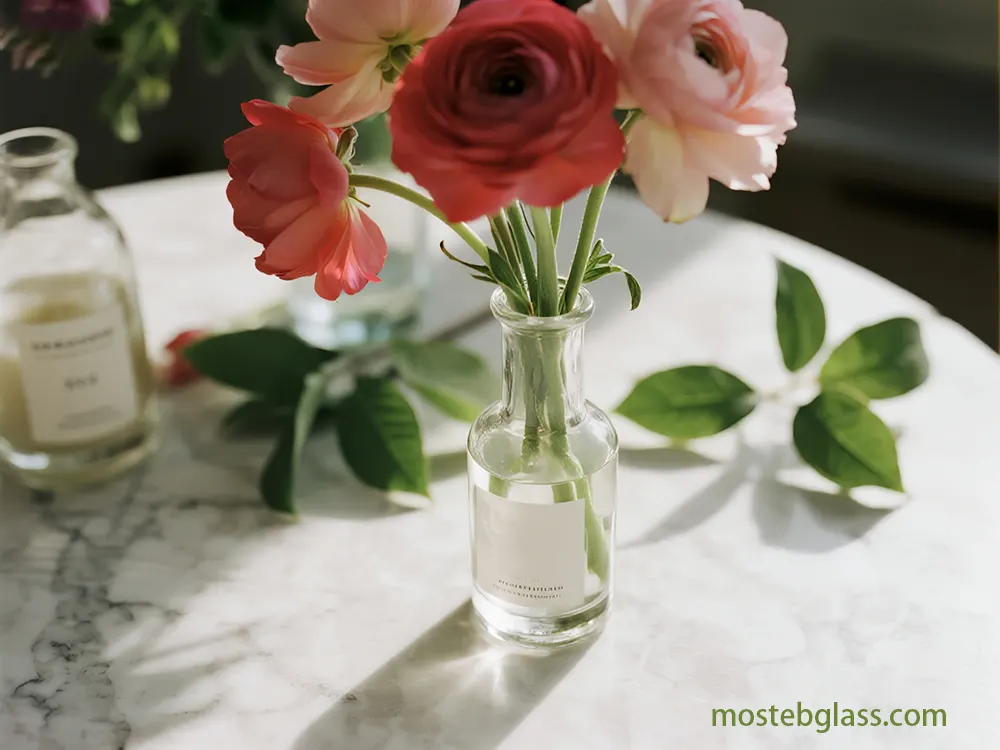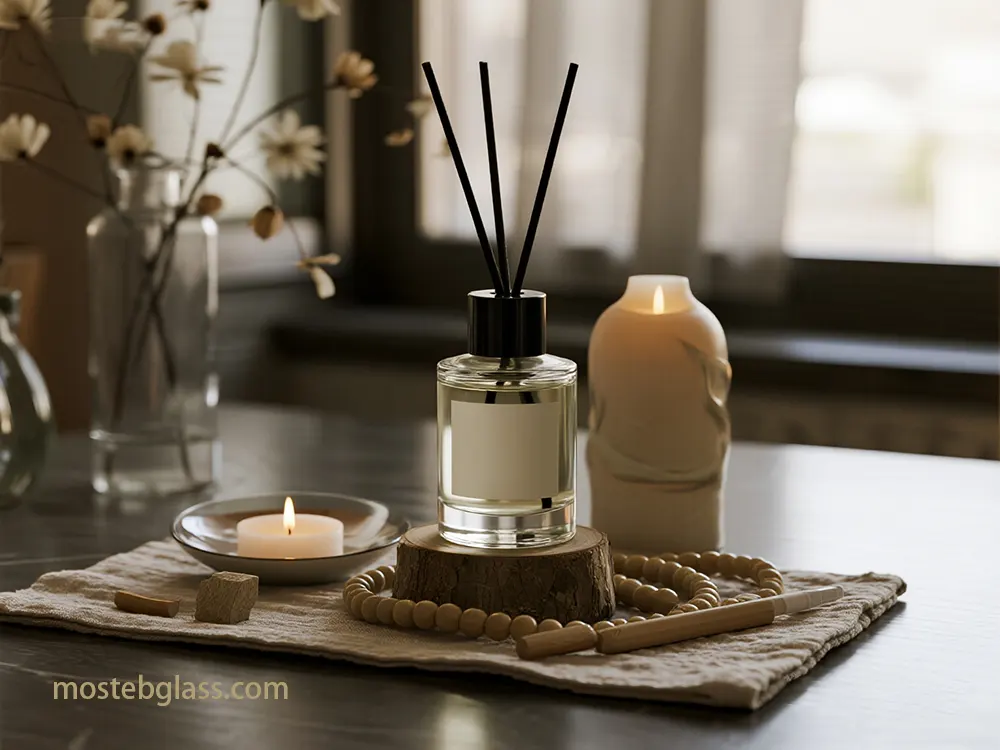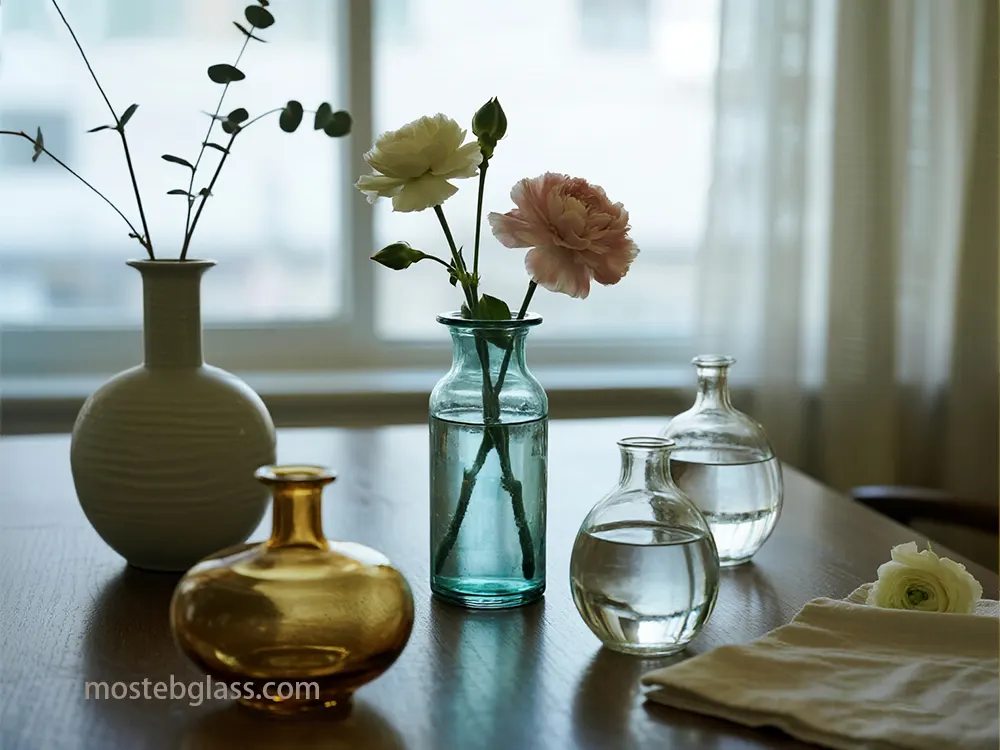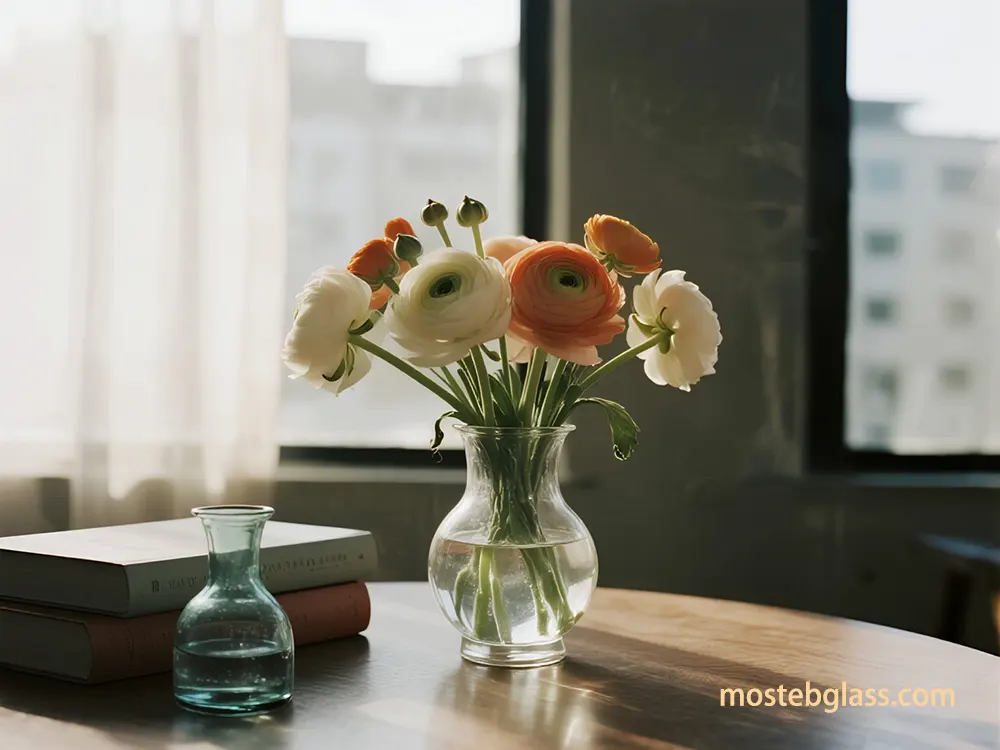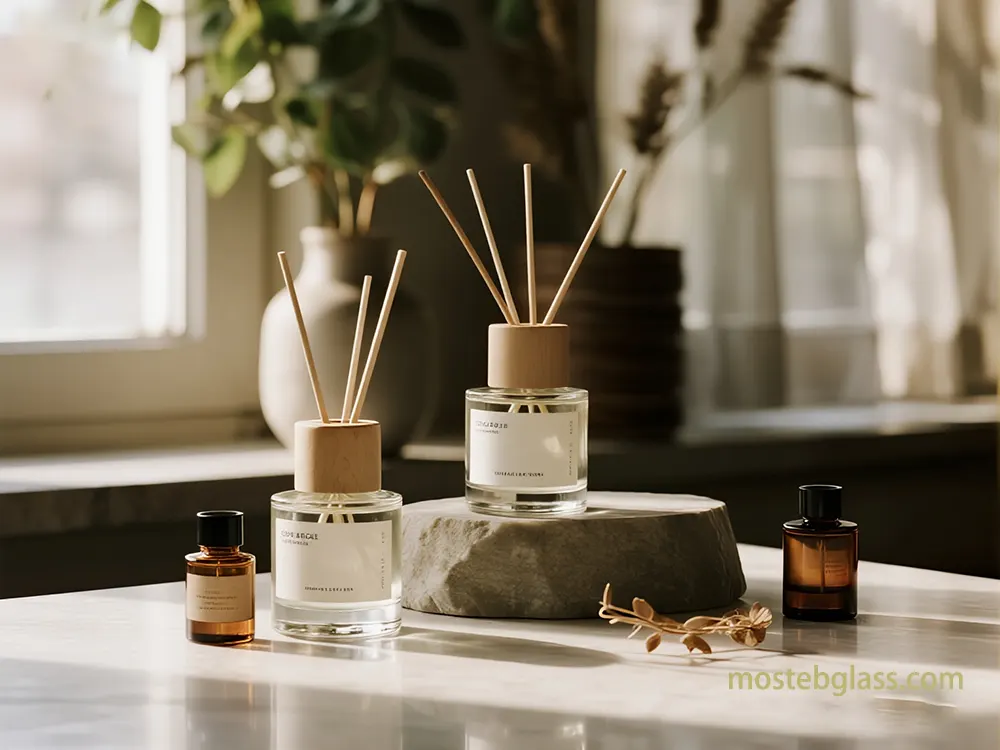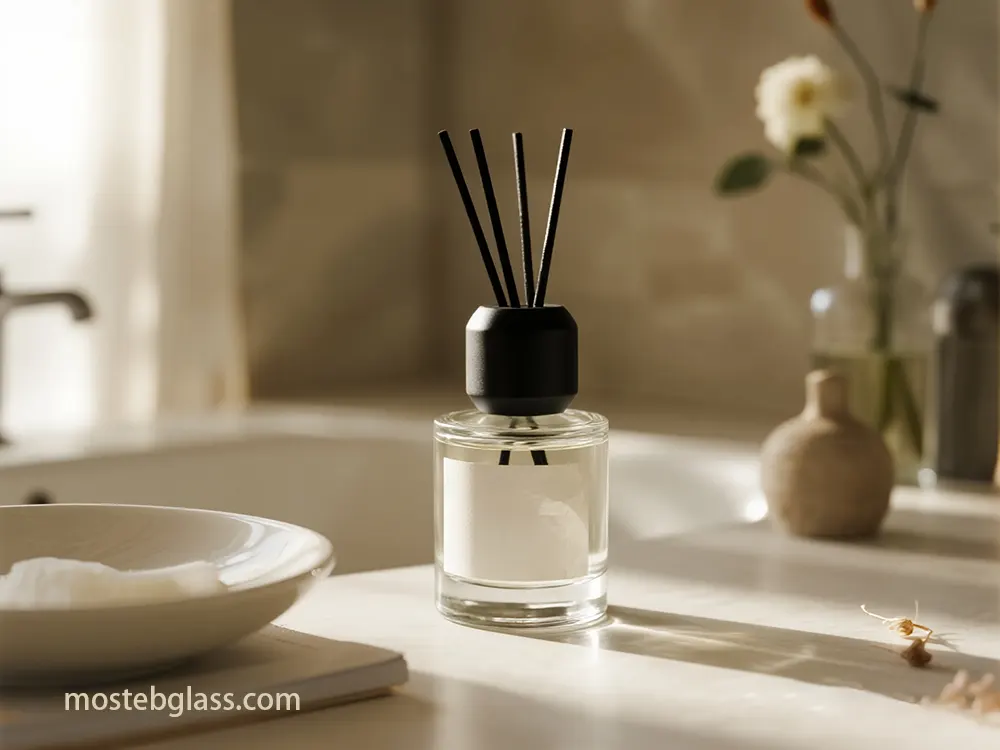In a rapidly competitive global market, decorative glass bottles cross their traditional role as containers merely containers, which develop in powerful artistic statements that define brand identity and attract consumers. For the best brands, including champions by Mosteb, these custom-designed ships represent a strategic fusion of functional packaging and artistic expression, providing a unique eveany for discrimination and enhanced consumer engagement. This report discovers the versatile world of custom decorative glass bottles, their market importance, complex design processes, advanced construction techniques, strategic brand value and innovative trends shaping their future.
1. Overview: The Art of Packaging
Strategic importance of custom decorative glass bottles lies in their ability to convert packaging of a product into a tangible piece of art. This approach makes psychological trigger and sensory experiences deep consumer connections and to justify premium pricing, make them indispensable to luxury brands. By offering unique shapes, colors, finish, and complex designs, these bottles are important to separate brands in a competitive market, creating a harmonious brand experience that makes products immediately recognizable and confirms the brand identity. Clarity, weight, smooth texture, and quality of glass, appeal of total beauty of boycott, and surgery, which is clearly assembled, which is clearly assembled.
2. Market Landscape and Key Applications
Premium, beauty -operated packaging, especially the market for decorative glass bottles, is experiencing strong growth, which is operated by developing consumer preferences and industry trends.
2.1. Market Segments and Growth Drivers
Demand for custom decorative glass bottles is mainly fuel by premium spirits, craft drinks and areas of luxury cosmetics and aroma.
- Premium Spirits and Craft Beverages:Serge in craft beer and premium spirites, including wine and ready-to-drink (RTD) cocktail, is an important driver. Craft labels often opt for flint bottles to demonstrate the color and carbonation of the product, while the glass is universally favored to its ability to maintain taste and signal authenticity. For example, the UK Spirits Market, GBP reached 16.8 billion in 2024, with more than 50 additional distillery, it was underlined how the premium positioning glass runs uptake. The RTD cocktail is estimated to increase to 16.2% per year by 2030, with a strong preference for glass packaging.
- Luxury Cosmetics and Fragrances: This sector remains a primary driver for luxury packaging, with a preferred material to communicate glass luxury and meet recycling goals. Global glass perfume bottle market is estimated to increase from $ 2.5 billion to $ 2033 in 2025 to increase to $ 3.7 billion, inspired by the demand for premium and sustainable packaging.
- Pharmaceuticals’ Indirect Influence: When it is not directly decorative, high quality glass packaging (eg, for mRNA vaccines, GLP-1 injections, and high-end cosmetic containers such as GLP-1 injection, and ampoules) is the demand for pharmaceutical industry to demand a 7.25% Cagratiials through 2030.
2.2. Underlying Consumer Trends
Many consumer trends reduce market growth for custom decorative glass bottles:
- Sustainability: It is the most important growth driver, in which a strong focus is on recurrence and biodegradable options. 55% of consumers consider stability when purchasing luxury fragrances, and brands such as Louis Vuitton and Sephora are implemented refillable perfume programs. The global refillable perfume market is estimated to increase from 2021-2031 to 5.3% CAGR.
- Premiumization and Aesthetic Appeal: Consumers rapidly demand better-quality, aesthetic glass packaging. Glass is considered as a premium, non-reactive material that preserves taste and increases brand image.
- Personalization and Customization: The demand for individual fragrance experiences and unique packaging solutions is increasing. Craft drinks brands use limited-sanskrit releases with unique artwork, seasonal designs and regional subjects to create individual connections.
- Digital and Interactive Packaging: Technologies such as QR code and agmented reality (AR) are changing consumer engagement, providing brand stories, liquor making processes or access to animated artwork. NFC solutions are also receiving approval for product authentication and traceability.
- Functional Packaging:Innovations such as airless pumps and ergonomic shapes improve facilities and bliss by contributing to premium appeal.
- Design Innovation and Sensory Appeal: Architecture, vintage jewelry, and artistic bottle inspired by cultural elements enhance brand storytelling. The touch finish and ornamentation attach the feeling of touch of consumers.
- E-commerce Growth: Extension of e-commerce, especially for luxury goods, requires packaging that protects the product during transit and creates a memorable unboxing experience.
2.3. Economic Factors and Geographical Markets
- Global Market Size: The global glass packaging market is estimated to increase USD 70.23 billion in 2025 to 2034 by 2034 to increase USD 108.95 billion, which registers 5% 59 CAGR. Overall, the price of luxury packaging market is USD 17.98 billion in 2023 and by 2032 USD is estimated to reach 28.23 billion.
- Rising Disposable Incomes: Increase in disposable income and changing lifestyle globally, especially in developing countries such as China and India, demand fuel for luxury products.
- Geographical Dominance: Asia Pacific is the largest and fastest growing region for the Glass Packaging Industry, estimated in 6.3% CAGR. Europe holds an important part (38.12%of global volume in 2024) due to high consumer consciousness about stability and preference for glass. North America dominated the luxury packaging market with a 33.2% stake in 2023.
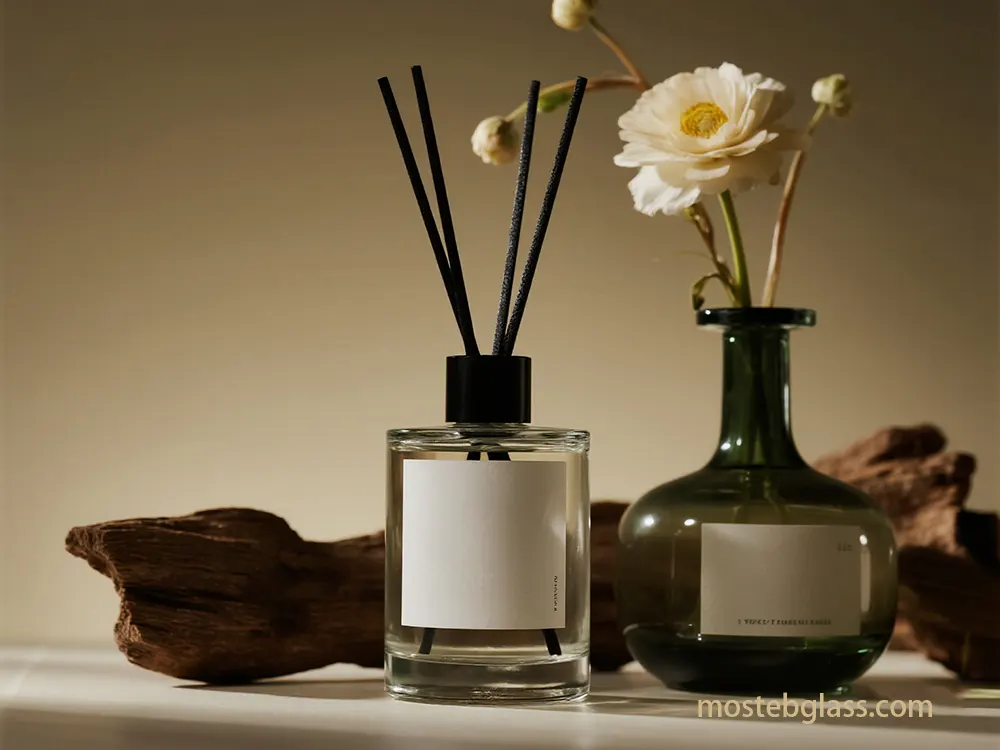
3. The Art of Bottle Design: Crafting Visual Narratives
The design of custom decorative glass bottles is a sophisticated process that converts functional objects into pieces of specific art, telling the story of a brand through visual and touch elements.
3.1. Sculptural Forms and Intricate Embellishments
The spectrum of artistic complexity in the design of the glass bottle ranges from microscopic surface decorations to bold, integrated sculpture elements.
- Unique Shapes and Sizes:Tall, thin design provoke elegance and sophistication, while unique, sculpture, or geometrically inspired shapes increase discrimination and collectivity.
- Weight: Heavy glass bottles make the perception of high quality, luxury and premium craftsmanship.
- Transparency: The clarity of glass allows consumers to see products, establish trust and authenticity and show the quality of the product.
- Finishes and Decorations: Embossing, engraving, metal foil, matte coatings, UV finish, and frosting depth, sophistication and uniqueness. Frustaded glass can indicate purity, while high-gloss finishes express modern sophistication.
- Colors:Specific color provoke emotions; Black and Gold Convocation and Exclusive, are often used by perfumes and luxury products.
3.2. Advanced Design Methodologies
Modern design takes advantage of state -of -the -art technologies to achieve unprecedented levels of adaptation and complexity.
- Parametric Design: This approach is actively applied to glass bottle mold development, providing more control from the definition of initial bottle to mold characteristics. This allows for analysis of diverse production scenarios and significantly reduces the design and analysis cycle time, improving manufacturing yield.
- 3D Printing for Prototyping and Molds:3D printing technology, especially through companies such as Glassomer GmbH, enables rapid prototyping of glass bottles in actual glass without expensive traditional molds, facilitates easy testing and adaptation for small medium scales. “Fingerprint”. Digital fire is refining methods for 3D printing master molds for ceramic bottles, simplifies the process and enables quick production of working plaster test molds.
- Direct 3D Printing onto Glass:This advanced technique applies three-dimensional patterns or text directly to the glass surface using special 3D print ink. It creates design with a strong concrete and convex texture, providing strong view and touch effects. During excessive adaptation, it currently faces challenges such as high cost and slow printing speed.
- Software-Aided Design: Modern 3D modeling software such as blender 3D, Rhino 3D with 3D, and fusion 360 are important for designing complex and sculpture glass bottles. These tools enable algorithm control over symmetrical designs through modifying stacks, NURBS surfaces and geometry such as modifying stacks such as shape and volume, accurate shape and modified techniques.
- Multi-Stage Press Forming: This advanced technology includes several sequential pressure stages to create highly detailed and accurate design, especially effective for optical lenses requiring fancy glass-made substances or high accuracy.
- Artistic Transformation: Innovative approaches, such as Dutch designer Klaas Kuiken’s “Bottles Collection,”transforms everyday bottles into unique sculpture forms, which by heating them and inflating them, exploiting inherent glass thickness irregularities.
4. From Concept to Creation: Manufacturing and Decoration
A trip to a prepared decorative glass bottles from a design concept includes diverse production functioning and ornamentation techniques, which correspond to artistic complexity and production versions.
4.1. Production Methodologies
- Custom Molds: Custom Glass Bottle requires dedicated molds to create shape, which requires important upfront costs (e.g., USD 1500-2900 for simple flint clear glass designs, up to USD 11000 for complex green/amber glass). This investment is reflected on production runs, making small custom orders especially expensive per unit.
- Artisanal Glass Blowing: Free Blowing is a manual technique where artisans shape melted glass without molds, resulting in one type of, highly artistic pieces. This method is generally reserved for niche markets or high -end product lines, as it is not economical for large -scale commercial production.
- Quality Control: Rigid quality control (QC) is paramount through melting, formation and post-production decoration by inspection of raw materials. Automatic inspection machines, manual visual inspections, machine neck inspections, online sampling, and laboratory probe dimensional accuracy, surface quality and strength ensure. Preparation of appropriate surface before decoration is important to prevent adhesion and defects.
4.2. Decoration Techniques
The choice of decoration technique significantly impacts the aesthetic, durability, cost, and production volume.
- Screen Printing (ACL): A versatile and durable method for accurate design, logo and artwork, offer various color options including metal and fluorescent ink. Affected by the number of colors, per-unit cost decreases with high versions. The setup cost is $ 250- $ 500 to a color $ 750- $ 1500 to three or more colors, per-unit cost is usually between $ 0.10- $ 0.25 for a color and $ 0.25- $ 0.60 for many colors. MOQs usually come between 1,200 and 2,000 bottles, although some providers offer short -term services.
- Digital Printing: An innovative technique allowing flexible production versions including small runs. It supports an unlimited array of colors, complex designs, gradients, photographic images and even 3D embossing effects, converting standard bottles into creative canvas.
- Decal Application: Involves transferring images or text on the glass surface, which then fuses with the bottle after high temperature heating. It excels in displaying fine images, photos, gradients and full-round artwork. Usually more expensive than screen printing, with a specific emocue of 1,000 pieces. High -temperature decals provide a strong, fused bonds, while low -temperature decals provide vivid colors and metallic glow at low cost.
- Electroplating: Applies a metal coating (eg, gold, silver, copper) on the glass surface, provides a luxurious metal texture and glow, while also improves scratch resistance. It is much cheaper than pure metal to manufacturing parts, but usually requires high MOQ of 10,000 pieces for glass bottles.
- Other techniques:
- Hot Stamping: A premium applies metallic foil to durable finish.
- Embossing/Debossing: It creates directly lifted or recessed design on the glass, adding the touch and visual depth.
- Spray Coating: Custom provides adaptable options for colors, coatings and textures, increasing scratch resistance.
- Traditional Labeling: Paper, film, or plastic labels remain flexible and inexpensive, which are suitable for frequent design changes, detailed graphics and small batches.

4.3. Cost Considerations
The per-unit cost of the decoration decreases with high order amounts due to dramatically scale economies. Energy costs representing 20–30% of total production expenses also greatly affects the pricing of the bottle.
5. Strategic Positioning and Brand Value
Custom decorative glass bottles are a powerful tool to increase brand discrimination, premium market status and consumer perception in various market areas.
5.1. Psychological Impact and Perceived Value
- Emotional Responses and Cognitive Biases: Custom receives emotional reactions such as high -end packaging, expectations, enthusiasm and indulgence, including decorative glass bottles. This takes advantage of “halo effect”, where the quality of packaging affects the alleged quality of the product, promoting desires for status and specificity.
- Materiality and Quality Perception:Consumers psychologically combine high-end materials, especially with better product quality and safety. The weight and texture of the glass bottle considers the perceived quality and value, in which heavy bottles suggest premium craftsmanship.
- Sensory Engagement: Luxury packaging attachs many senses- the site, touch (touch coatings, embossed pattern, weight of the bottle), and even sound (eg, a magnetic off). These multicencice experiences make memorable interactions, promote strong emotional connections and strengthen luxury status.
5.2. Brand Differentiation and Storytelling
- Custom Design and Craftsmanship: Sophisticated design, careful craftsmanship, and complex details communicate high standards and uniqueness of a brand, justifying high value points. Consumers are willing to pay more for high quality packaging.
- Unboxing Experience:The way a package opens and reveals a product is an important element that creates anticipation and enthusiasm. Features such as hidden compartments and magnetic off enhance “unboxing experience”, which is an important aspect of customer satisfaction and social media sharing.
- Brand Storytelling and Identity: Luxury packaging serves as a powerful medium for brand storytelling, including elements that reflect brand identity and values through the shape of color, graphics, text and bottle. For example, Tiffany & Co.’s signature blue box provoked immediate recognition and uniqueness.
- Visual Cues: Color, size, typography, and overall design immediately affect perception. Colors consist of subconscious emotions (eg, black and gold for elegance), and unique bottle size refinement and luxury dialogue.
5.3. Sustainability as a Luxury Attribute
Glass is recognized as a permanent packaging option, while combining with eco-conscious consumer values, its infinite recycling and re-purpose. Brands such as Estals provide 100% post-consumer recycled glass options. Consumers, especially young demographics, are ready to pay a premium for permanent packaging, see it as an integral part of luxury experience. This desire is influenced by confidence in the claims of perceived environmental benefits and stability.
6. The Road Ahead: Emerging Trends and Future Outlook
Custom decorative glass bottles are characterized by a strong emphasis on stability, technical integration and continuous innovation in design and functionality.

6.1. Sustainable Innovations
- Lightweighting: Glass bottles have become light 30% light on an average in the last 20 years. Innovations such as the Ikowai technology of the weightropack produced tempered light glass that cuts weight from about one third and increases strength, causing a decrease in 25% of carbon emissions. The weight of a bottle of liquor in the Ecova range of Verlia is reduced from 90g to 65g, leading to a decrease in 6% CO2. The trend is powered by low transport emissions and low shipping costs, with light glass packaging market to grow up to 5-7% from CAGR to 2030.
- Refillable and Reusable Systems:Glass is the leader of the undisputed market in reusable packaging. Revino launched an end-to-end refillable glass bottle reese system for the wine industry, which offered a decrease in emissions up to 85% compared to the bottles of 50 times and single-use bottles. The initiative from Coca-Cola HBC, PepsiCo, Vetropack(reusable milk bottles), and varies (refillable perfume range) exposes this trend.
- Advanced Recycling and Recycled Content: Glass is infinitely recycled. The objective of the Eurglass Project funded by the European Union is to bring revolution in glass recycling by 2027 with a prototype machine using lasers for energy-efficient and portable recycling. Post-consumer recycled (PCR) Including glass (collet) reduces the needs of raw materials and reduces energy consumption. The purpose of Diageo is for 60% recycled materials by 2030, and the Glass Packaging Institute (GPI) targets 50% US glass recycling rate by 2030.
6.2. Smart Packaging and Digital Engagement
- QR Codes, NFC Tags, and Augmented Reality (AR): QR Code, NFC tags, and enhanced reality (AR): 3D product performance, virtual tri-on, brand stories, and personal tips such as individual tips. QR code can link to cuisine, while NFC tags enable real -time supply chain tracking and authentication. AI integration with AR allows for individual digital materials. Brands such as Jones Soda use QR code for AR-capable customer-produced video content, and AR can also reduce the requirement of printed material.
- Embedded Sensors:Emerging sensors, especially for food and sensitive products, may indicate malfunction (eg, color-dyed cork for milk) or provides real-time shelf-life updates by sensing the chemical composition. Startups such as Blakbear and whether it is developing fresh these solutions, although the cost remains a hurdle to adopt large scale.
6.3. Regulatory Pressures and Market Growth
- Regulatory Mandates: Regulatory pressures, particularly the European Union (Draft Packaging and Packaging Waste Regulation – PPWR) and in the US (extended manufacturer responsibility – EPR law), there are important drivers for sustainable glass packaging innovations. These mandates apply the goals of waste reduction, harmonious reusing systems and high recycled materials, which hypnotize brands to adopt overall packaging strategies.
- Market Growth: The price of the global glass packaging market is around 74.64 billion USD in 2025 and is expected to reach USD 105.25 billion by 2033, with a CAGR of ~ 4.4%. This growth is fuel at the desire of the consumer to pay more for permanent packaging (73% of Gen Z buyers prefer eco-friendly packaging), regulator mandate and corporate ESG goals.
6.4. Opportunities for Innovation
- Innovative Material Compositions and Coatings: Industry is searching for “low -effect coatings” to improve durability and aesthetics without environmental damage. Specific glass types such as Miron Violet Glass enhanced UV protection, and advanced sealing techniques for oxygen-career lids are being developed. Glass combination hybrid packaging solutions with durable materials such as bamboo or cork are also emerging for an eco-chic aesthetic.
- Startup Ecosystem:US-based remark glass (zero-ill-made, waste glass products), aero agarigates (ultra-lightweight formid glass agargets), glust (India, 60% regeneration glass), and evolution glass (US, USA, US, 100% Revolutionary Bottle Glass) Addressing packaging solutions.
The future of custom decorative glass bottles, the new spirit of brands such as Mosteb, is in the continuous discovery of unwavering, artistic excellence, technological advancement and unwavering commitment to stability. By embracing these trends, the packaging will actually turn into art, produce permanent values for brands and consumers.
